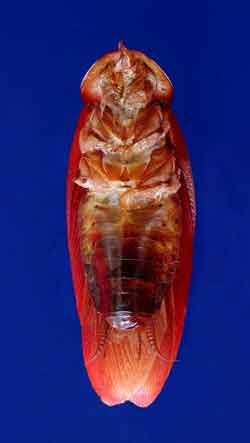|
|
Parasites Hit America's Poor
Doctors Concerned that Diseases Usually Associated With Developing Countries are
Spreading Here in United States
by Sean Hinds, age 17
 A new epidemic poses a serious threat to the poor and could raise healthcare costs.
A new epidemic poses a serious threat to the poor and could raise healthcare costs.
Circulated by bug bites and animal feces, parasitic infection rates are increasing rapidly in impoverished regions around the United States. Hardest hit are areas that are overcrowded, where people suffer from malnutrition and poor sanitation practices.
Parasitic infections are prevalent near the United States/Mexico border as well as in Appalachia, particularly among African Americans and Hispanic people. Suburban populations are usually at little risk, but the same cannot be said for the 37 million people living below the poverty line.
Researchers say these infections can lead to heart disease, seizures, birth defects, and lesions in the brain. “These are diseases that we know are 10-fold more important than swine flu,” says Peter Hotez, a microbiologist at George Washington University.
Poor communities in Detroit and Baltimore have witnessed an increase in bacterial infections transmitted by rat urine. The lack of glass or screens in windows and poor drainage that allows insects to breed in standing water have led to insect-borne infections in the shanty towns near the Mexican border. Each year about ten thousand children in these areas contract the parasite toxacara. Found in soil and sand, toxacara leads to retinal scarring, fever, and wheezing.
Cysticercosis, caused by tapeworm larva, enters the bloodstream and ravages the brain, heart and lungs. Doctors see an estimated 3,500 cases per year. Most of these cases are among Latin American immigrants. New cases have recently been reported in Oregon, Mississippi, Iowa, and Ohio. Treatment for cysticercosis is available, but often involves years of anti-seizure medication.
Chagas, a particularly deadly parasite, triggers cardiac inflammation and can cause heart failure. The ‘kissing bug’ of Latin America and the American South is responsible for the spread of Chagas. Upon receiving a bite from this infamous bug, a protozoan parasite enters the bloodstream. Two years ago, concern about Chagas rose dramatically, as hundreds of Hispanic Americans in Florida and California were diagnosed. Blood banks began to screen for this disease.
This seemingly exotic disease often warrants little concern, especially among those who lack symptoms; many choose not to get tested. There is concern that illegal immigrants do not want to draw attention to themselves: “They’re afraid of the consequences of finding out they’re infected in the U.S.,” says Susan Stramer, executive science officer of the American Red Cross.
Treatment for Chagas, with a cure rate of 70 percent, involves three daily doses of a drug, the side effects of which include insomnia, nausea, and memory loss.
Tackling these parasitic infections will be no easy task. Experts agree that the first step in confronting the epidemic is to learn more about them and then spread awareness.
[Sources: The Wall Street Journal; USA Today]
|
|

